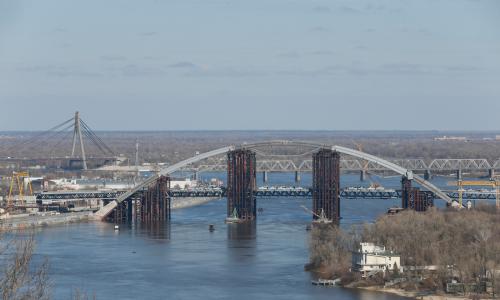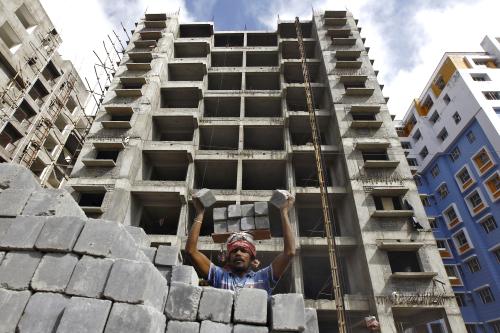Infrastructure investment is vital to growth in the United States, but making a lasting impact will depend not on “how much” but “how well.” President-elect Donald Trump has proposed up to $1 trillion over a decade on building roads, bridges, ports, schools, and hospitals to make America’s infrastructure “second to none.” By one estimate, an increase in investment by 1 percentage point of GDP in some advanced countries, with large infrastructure gaps or needs, like the U.S., can raise GDP by 0.4 to 1.5 percent in the following four years. But such growth would also depend on doing several things differently.
The additional spending must squarely address growth-stunting gaps rather than just getting money out the door. The cracks in America’s infrastructure are glaring. Two-thirds of the country’s major roads are in poor condition and a quarter of its bridges require major repair. Fixing these problems could create a considerable number of jobs, adding to the 14.5 million workers already in jobs ranging from construction to plant operation.
Growth is also held back by insufficient investment in education systems, health services, and environmental care. The outgoing administration’s economic stimulus package of $830 billion during 2009–2019 has rightly included transport, energy, social sectors, and the environment. But it has not paid sufficient attention to dealing with the critical impediments to growth in the social sectors. Rather, the rationale has been that, during recessions, the government can offset the decrease in private spending with an increase in public spending to save jobs. This approach helped stave off a depression, but didn’t target growth obstacles like raising worker productivity.
Other countries have tried to raise economic growth through infrastructure spending. China put in over 8.5 percent of GDP into infrastructure in the 1990s and 2000s. While the country has had its share of bridges to nowhere, white elephants, and ghost cities, for the most part the new investments helped fill key lacuna in energy and transport. The associated economic growth averaging 10 percent a year speaks of the program’s success.
Japan spent $6.3 trillion, or an annual 4.7 percent of GDP, on roads, bridges, and other infrastructure projects during the same time. But growth was just 0.5 percent a year, suggesting that the investments had a low growth effect. For a higher impact from its public works spending, Japan might have addressed its unraveling challenges of population aging, energy supply, and food prices instead of largely building more roads.
Infrastructure investment must also foster technological innovation especially in places like California and Maryland with concentrations of technology and security related jobs. In transport, investment is needed in driverless technologies, alternative fuels, shareable vehicle networks, traffic analytics, and transit-oriented development. U.S. ports in cities like Los Angeles-Long Beach, New York City, and Baltimore will benefit from upgrades to increase efficiency and handling capacity. It will be equally important to modernize their networked computers, control systems, and cybersecurity.
New technologies can make the greatest impact on climate change in energy, transport, and land, the primary sources of CO2 emissions. The solar industry notably in California, Nevada, and Arizona symbolizes technological progress and employs some 200,000 people in the U.S.—more than the fossil fuel or cement industries. Clean energy is the most reliable way to bring jobs to rural American, not a return to fossil fuels as Trump proposes. Worldwide job growth in solar and renewable energy is already outpacing that in fossil fuels.
But even when a major infrastructure splurge is well-conceived, the financing still matters. If done mainly through public borrowing for power and transport, the Trump administration will need to account for the effect of debt servicing on other investments such as health and education. Unconstrained expansion of spending without attention to the sources of financing would also lead to inflationary pressures.
Shifting investments from the government’s books to the private sector can help. Public-private partnerships are becoming more popular globally, but user charges, enterprise regulations, and not least political consensus need to favor them. When effective, they can cut implementation time, for example, the I-595 highway in Florida, the expansion of Seagirt Maritime Terminal in Baltimore, and the Long Beach Courthouse in California.
Simply put, it is not enough to spend more on physical infrastructure and expect higher growth. The spending proposals must build in plans to eliminate growth inhibitors, encourage innovation, and ensure sustainable modes of financing.







Commentary
Will more infrastructure spending increase US growth?
December 13, 2016